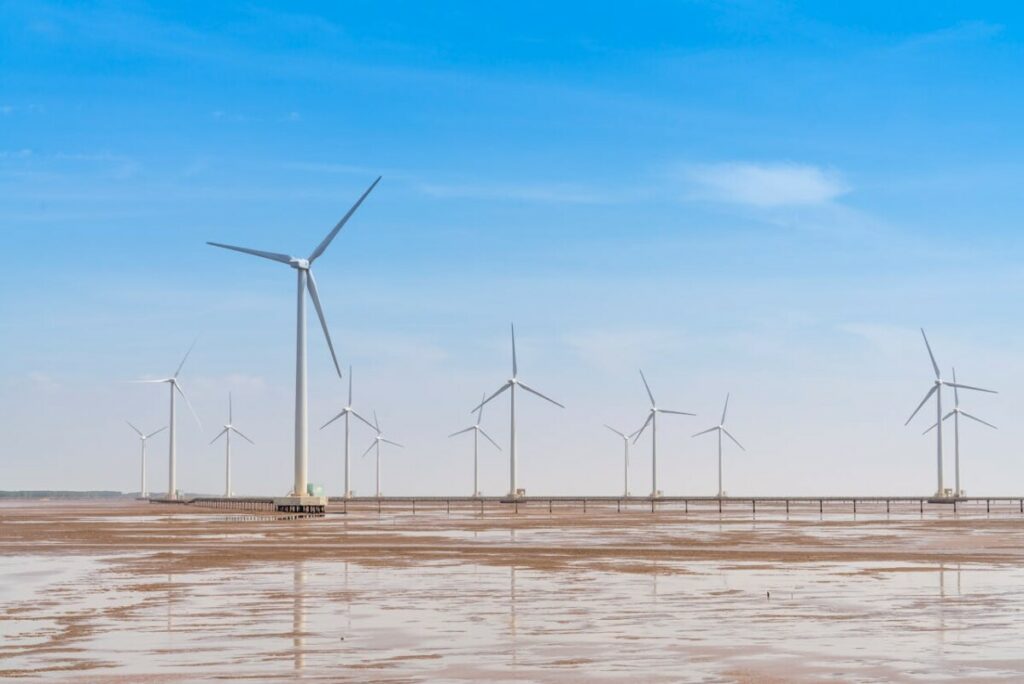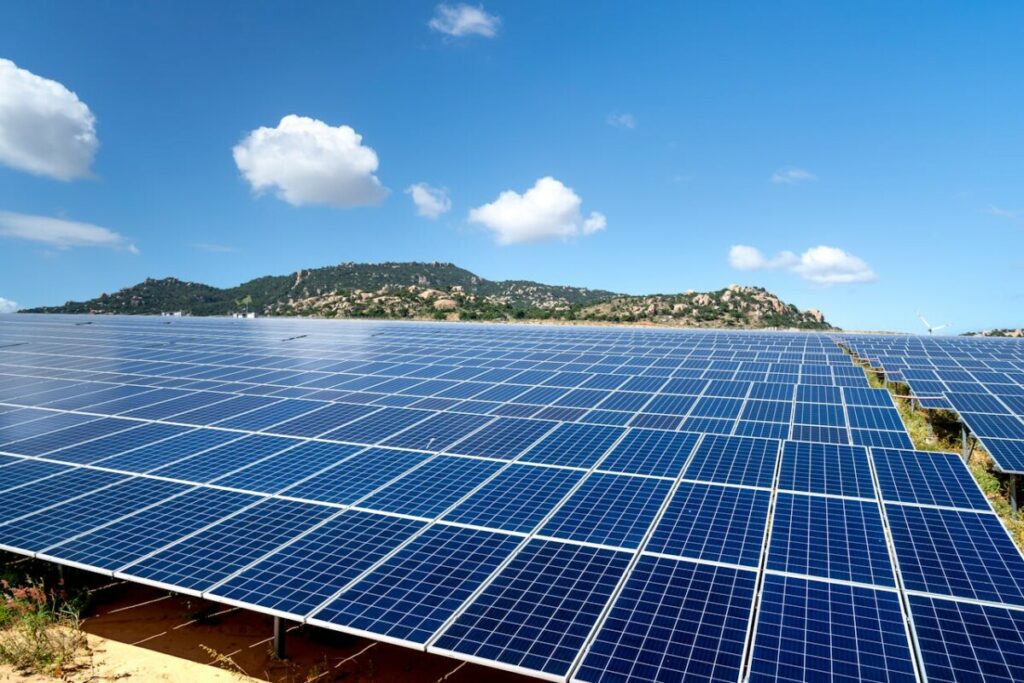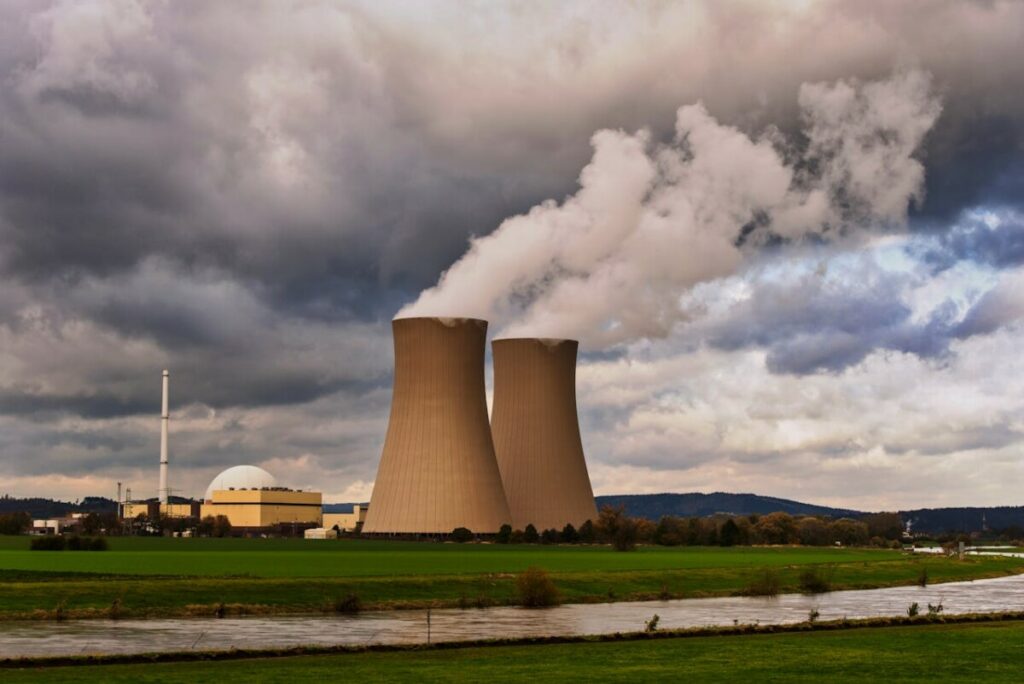Is Oil a Renewable Resource?
In the quest to understand our energy needs, a crucial question arises: Is oil a renewable resource? As global energy demands continue to grow, the reliance on oil remains significant.
However, the finite nature of this resource, coupled with the environmental challenges it presents, has sparked a widespread debate about its sustainability.
The use of oil as a primary energy source has implications for climate change, carbon dioxide emissions, and the future of global energy policy.
Therefore, it becomes essential to explore whether oil can be considered a renewable resource or if alternative energy sources should be prioritized.
What is Oil, and How is it Formed?
Oil, also known as petroleum, is a liquid fossil fuel that has been used for centuries as a primary source of energy.
Formed from the remains of ancient plants and animals, oil develops over millions of years under intense heat and high pressure within the earth’s surface.
These organic materials, buried deep beneath the earth’s crust, undergo a transformation that results in the liquid form of oil found in vast underground reservoirs.
Oil is primarily composed of hydrocarbons, which are organic compounds made of hydrogen and carbon.
When these compounds are burned, they release energy in the form of heat, making oil a powerful fuel source.
However, this process also releases carbon dioxide, a greenhouse gas that contributes to global warming and climate change.
Is Oil a Renewable Resource?
The question of whether oil is a renewable resource is crucial in understanding its long-term viability.
Renewable resources, such as solar energy, wind power, and geothermal energy, are naturally replenished and have an almost unlimited supply. In contrast, non-renewable resources like oil are finite and take millions of years to form.
Therefore, oil is classified as a nonrenewable energy source because its regeneration process is far too slow to keep up with current global demand.
The Environmental Impact of Oil
The use of oil has significant environmental implications. Burning oil for energy leads to the release of carbon dioxide and other greenhouse gases. Which contribute to the greenhouse effect and climate change.
Moreover, oil spills, a common occurrence during the extraction and transportation of oil, cause severe water pollution and damage to marine ecosystems.
These environmental concerns have prompted a global shift towards renewable energy sources as a means of achieving environmental sustainability.
Is Oil a Renewable Resource?

The Role of Oil in the Global Economy
Despite its environmental drawbacks, oil remains a critical component of the global economy. It is widely used in transportation, electricity generation, and industrial processes.
The United States, Saudi Arabia, and other major oil-producing nations rely heavily on oil revenues to sustain their economies.
As a result, the global demand for oil remains high, further complicating efforts to reduce reliance on nonrenewable resources.
However, the finite amount of oil available and the environmental consequences of its use have led to increased interest in alternative energy sources.
Renewable natural gas, solar power, wind energy, and nuclear power plants are being explored as potential solutions to reduce dependency on oil and mitigate its environmental impact.
The transition to these alternative energy sources is seen as a critical step towards achieving energy security and environmental sustainability.
The Finite Nature of Oil Resources
Given the formation process of oil, it is evident that oil is not a renewable resource. The time required for the formation of oil, often millions of years, makes it a finite resource that cannot be replenished within a human timescale.
The earth’s oil reserves are depleting, and as demand continues to rise. Concerns about the sustainability of relying on oil are growing.
Understanding the limited nature of this resource is crucial in shaping global energy policy and ensuring energy security.
The Consequences of Relying on a Nonrenewable Resource
Relying on oil, a nonrenewable fossil fuel, has several long-term consequences. Firstly, as oil reserves diminish, the cost of extraction increases, making oil more expensive and less accessible.
This situation could lead to economic instability, especially for countries that are heavily dependent on oil exports.
Additionally, the environmental degradation caused by oil extraction, transportation, and consumption poses a significant threat to the planet.
Oil spills, for instance, have catastrophic effects on marine life and coastal ecosystems. As evidenced by several high-profile incidents in recent history.
Moreover, the burning of oil contributes to greenhouse gas emissions, particularly carbon dioxide, which exacerbates climate change.
The environmental impact is further intensified by the use of oil in industrial processes, transportation, and electricity generation.
This reality underscores the urgent need to transition to alternative energy sources that are more sustainable and environmentally friendly.
Is Oil a Renewable Resource?

Alternatives to Oil: A Path Forward
In response to the challenges posed by the reliance on oil, there has been a growing interest in alternative energy sources.
Renewable energy sources, such as solar energy, wind power, and geothermal energy, offer viable alternatives that are both sustainable and environmentally friendly.
These energy sources are replenished naturally and do not contribute to the greenhouse gas emissions associated with fossil fuels.
Solar Energy
Solar energy harnesses the power of the sun to generate electricity and heat. It is one of the most abundant and renewable resources available on the planet.
Through the use of solar panels, sunlight is converted into electricity. Which can be used to power homes, businesses, and even electric vehicles.
Unlike oil, solar energy does not produce carbon dioxide or other harmful emissions. Making it a key player in the fight against climate change.
Wind Power
Wind power is another renewable energy source that has gained popularity in recent years. By capturing the kinetic energy of wind through turbines, wind power can generate electricity without emitting greenhouse gases.
The use of wind energy has grown significantly, particularly in regions with strong and consistent wind patterns.
Wind power is seen as a promising alternative to oil. Especially in countries that are looking to reduce their carbon footprint and transition to cleaner energy.
Geothermal Energy
Geothermal energy, derived from the earth’s heat, is a renewable resource that can be used for electricity generation and heating.
This energy source taps into the natural heat produced by the earth’s core and is particularly effective in regions with high geothermal activity.
Like solar and wind energy, geothermal energy produces minimal greenhouse gas emissions, making it an attractive alternative to oil.
The Role of Nuclear Energy
Nuclear energy, while not renewable, is often considered a low-carbon alternative to oil. Nuclear power plants generate electricity through the process of nuclear fission. Where the nucleus of an atom, typically uranium ore, is split into smaller parts, releasing a significant amount of energy.
Although nuclear energy produces radioactive waste, it generates large amounts of electricity without emitting carbon dioxide. Making it a potential option for reducing greenhouse gas emissions.
The Future of Oil in the Global Energy Landscape
As the world grapples with the challenges of climate change and the finite nature of oil, the future of oil in the global energy landscape remains uncertain.
Some experts argue that continued reliance on oil will lead to severe environmental and economic consequences, while others believe that advancements in technology could make oil production more efficient and less harmful.
The Impact of Technological Advancements on Oil Production

Technological advancements have significantly impacted oil production, allowing for the extraction of oil from previously inaccessible reserves.
Techniques such as hydraulic fracturing (fracking) and deep-sea drilling have enabled oil companies to tap into oil deposits located deep beneath the ocean floor and in rock formations.
While these technologies have increased the global supply of oil, they have also raised environmental concerns.
Hydraulic Fracturing and Environmental Concerns
Hydraulic fracturing, commonly known as fracking, involves injecting a mixture of water, sand, and chemicals into rock formations at high pressure to release oil and gas trapped within.
This method has led to a boom in oil production, particularly in the United States, making the country one of the largest producers of oil in the world.
However, fracking has been associated with several environmental issues, including water pollution, increased seismic activity, and the release of methane, a potent greenhouse gas.
Methane emissions from fracking are of particular concern because methane is far more effective at trapping heat in the atmosphere than carbon dioxide, contributing significantly to global warming.
Furthermore, the vast amounts of water required for fracking can strain local water resources, particularly in arid regions.
These environmental risks highlight the need for careful regulation and oversight of fracking operations to mitigate their impact on the environment.
Deep-Sea Drilling and Its Risks
Deep-sea drilling, another technological advancement in oil production, involves extracting oil from beneath the ocean floor.
This method has opened up new reserves of oil in areas previously thought to be too difficult or expensive to access.
However, deep-sea drilling carries significant risks, as evidenced by the 2010 Deepwater Horizon oil spill in the Gulf of Mexico, which caused one of the worst environmental disasters in history.
Oil spills from deep-sea drilling can have devastating effects on marine ecosystems, leading to the death of marine life, the destruction of habitats, and long-lasting damage to the environment.
The cleanup process for such spills is often complex, costly, and can take years to complete. As a result, the environmental risks associated with deep-sea drilling have led to calls for stricter regulations and the development of safer drilling technologies.
Is Oil a Renewable Resource?

Transitioning to Renewable Energy: Challenges and Opportunities
The transition from oil to renewable energy sources presents both challenges and opportunities.
While renewable energy sources such as solar power, wind energy, and geothermal energy offer a sustainable alternative to oil, the shift to these technologies requires significant investment in infrastructure, research, and development.
Additionally, the transition must be carefully managed to ensure energy security and economic stability.
Infrastructure and Investment
One of the major challenges in transitioning to renewable energy is the need for substantial infrastructure development.
Solar and wind power, for example, require the construction of solar farms, wind turbines, and upgraded power grids to distribute the generated electricity.
These projects require significant financial investment and time to implement, which can be a barrier for countries with limited resources.
Furthermore, the integration of renewable energy into existing energy systems poses technical challenges.
The intermittent nature of solar and wind energy, which depends on weather conditions, requires the development of energy storage solutions to ensure a stable and reliable energy supply.
Advances in battery technology and the use of complementary energy sources, such as renewable natural gas and nuclear energy, are essential to overcoming these challenges.
Economic and Social Considerations
The transition to renewable energy also has economic and social implications. The shift away from oil could lead to job losses in the oil industry. Particularly in regions where oil extraction and processing are major economic activities.
However, the growth of the renewable energy sector presents new job opportunities in areas such as solar panel manufacturing, wind turbine installation, and renewable energy research.
Additionally, governments and policymakers must consider the social impact of this transition. Ensuring that communities dependent on the oil industry are supported through retraining programs and economic diversification efforts.
Balancing the need for environmental sustainability with economic stability is a critical aspect of the global transition to renewable energy.
Is Oil a Renewable Resource: Frequently Asked Questions (FAQs)

Is oil a renewable resource?
No, oil is not a renewable resource. It is a nonrenewable fossil fuel that takes millions of years to form and is being depleted faster than it can be naturally replenished.
What are the environmental impacts of oil extraction and use?
The extraction and use of oil have significant environmental impacts, including greenhouse gas emissions, water pollution, and habitat destruction. Oil spills and the release of carbon dioxide contribute to climate change and harm ecosystems.
What are some alternative energy sources to oil?
Alternative energy sources to oil include solar energy, wind power, geothermal energy, and nuclear energy. These sources are more sustainable and produce fewer greenhouse gas emissions.
How does fracking impact the environment?
Fracking can lead to water pollution, increased seismic activity, and the release of methane, a potent greenhouse gas. It also requires large amounts of water, which can strain local resources.
What are the risks associated with deep-sea drilling?
Deep-sea drilling carries significant environmental risks. Including the potential for oil spills that can devastate marine ecosystems and cause long-term environmental damage.
The Role of Policy and Innovation in Shaping the Future of Energy
The future of energy depends not only on technological advancements but also on the policies and regulations that govern the energy sector.
Governments, international organizations, and private industries must collaborate to develop and implement policies that promote the transition to renewable energy while addressing the economic and social challenges that arise from reducing dependency on oil.
These policies must be designed to ensure energy security, economic stability, and environmental sustainability.
Government Policies and Global Energy Policy

Government policies play a crucial role in shaping the energy landscape. By setting regulations, offering incentives, and investing in research and development, governments can drive the adoption of renewable energy sources.
For example, subsidies for solar power and wind energy have made these technologies more accessible and cost-effective. Accelerating their deployment worldwide.
In addition to national policies, international cooperation is essential for addressing global energy challenges.
Climate change, driven by greenhouse gas emissions from the burning of fossil fuels like oil, is a global issue that requires a coordinated response.
International agreements, such as the Paris Agreement, aim to limit global warming by reducing carbon dioxide emissions and encouraging the transition to cleaner energy sources.
Moreover, global energy policy must consider the energy needs of developing countries. Where access to reliable and affordable energy is crucial for economic development.
In these regions, policies should focus on balancing the use of fossil fuels with the adoption of renewable energy to support growth while minimizing environmental impact.
Is Oil a Renewable Resource?

Innovation in Renewable Energy
Innovation is key to overcoming the challenges associated with the transition to renewable energy.
Advances in technology can improve the efficiency and cost-effectiveness of renewable energy sources. Making them more competitive with oil and other nonrenewable resources.
For instance, improvements in solar panel efficiency, wind turbine design, and energy storage solutions are helping to make renewable energy a more viable alternative to fossil fuels.
In addition to technological innovations, new business models and financing mechanisms are emerging to support the growth of renewable energy.
For example, power purchase agreements (PPAs) and community solar programs allow consumers to access renewable energy without the need for large upfront investments.
These innovations are making it easier for individuals and businesses to participate in the transition to a more sustainable energy system.
The Importance of Environmental Sustainability
As the world faces the challenges of climate change, environmental sustainability must be at the forefront of energy policy and innovation.
The continued use of oil, with its associated greenhouse gas emissions and environmental risks, is incompatible with the goal of a sustainable future.
Transitioning to renewable energy sources, reducing reliance on nonrenewable resources. And promoting energy efficiency are essential steps in achieving long-term environmental sustainability.
Moreover, efforts to mitigate the environmental impact of oil production, such as reducing oil spills, improving energy efficiency in industrial processes, and developing cleaner extraction technologies, are necessary to minimize the damage caused by the continued use of fossil fuels.
However, these measures alone are not enough. A fundamental shift towards renewable energy is required to address the root causes of climate change. And ensure a sustainable future for generations to come.
Is Oil a Renewable Resource Conclusion
In conclusion, the question, “Is oil a renewable resource?” is critical in understanding the long-term viability of oil as an energy source.
The answer is clear: oil is a nonrenewable resource that cannot be replenished within a human timescale.
Its finite nature, coupled with the environmental and economic challenges it presents, underscores the need for a global transition to renewable energy sources.
Technological advancements, government policies, and innovation in renewable energy are paving the way for a more sustainable energy future.
However, this transition must be managed carefully to ensure that it supports economic growth, energy security, and environmental sustainability.
As the world moves towards a future less dependent on oil, it is essential to continue exploring and investing in alternative energy sources that can meet the growing global demand while protecting the planet for future generations.
Is Oil a Renewable Resource FAQs (Continued)

How does oil contribute to global warming?
Oil contributes to global warming by releasing carbon dioxide and other greenhouse gases when burned. These emissions trap heat in the atmosphere, leading to an increase in global temperatures.
What are the economic impacts of transitioning away from oil?
The transition away from oil can lead to economic challenges, including job losses in the oil industry and the need for significant investment in renewable energy infrastructure. However, it also presents opportunities for job creation and economic growth in the renewable energy sector.
Can oil production ever become environmentally sustainable?
While measures can be taken to reduce the environmental impact of oil production, such as improving efficiency and reducing emissions, oil production is inherently unsustainable due to its nonrenewable nature and the environmental risks associated with its extraction and use.
What role do electric vehicles play in reducing oil dependence?
Electric vehicles (EVs) play a significant role in reducing oil dependence by replacing internal combustion engines that rely on gasoline or diesel fuel. As the adoption of EVs increases, the demand for oil in the transportation sector is expected to decline.
Is it possible to achieve global energy security without oil?
Achieving global energy security without oil is possible. But requires a comprehensive transition to renewable energy sources, improved energy efficiency, and diversification of energy supplies. This shift will take time and coordinated efforts at both the national and international levels.
Recent Posts
Understanding Energy and Electricity: The Power For Progress
Energy and Electricity Energy and electricity are integral components of modern life, powering everything from homes and businesses to transportation and communication. Without them, the...
The Future of Wind Energy The future of wind energy is set to play a critical role in addressing global energy needs while combating climate change. As renewable energy sources like wind and...


